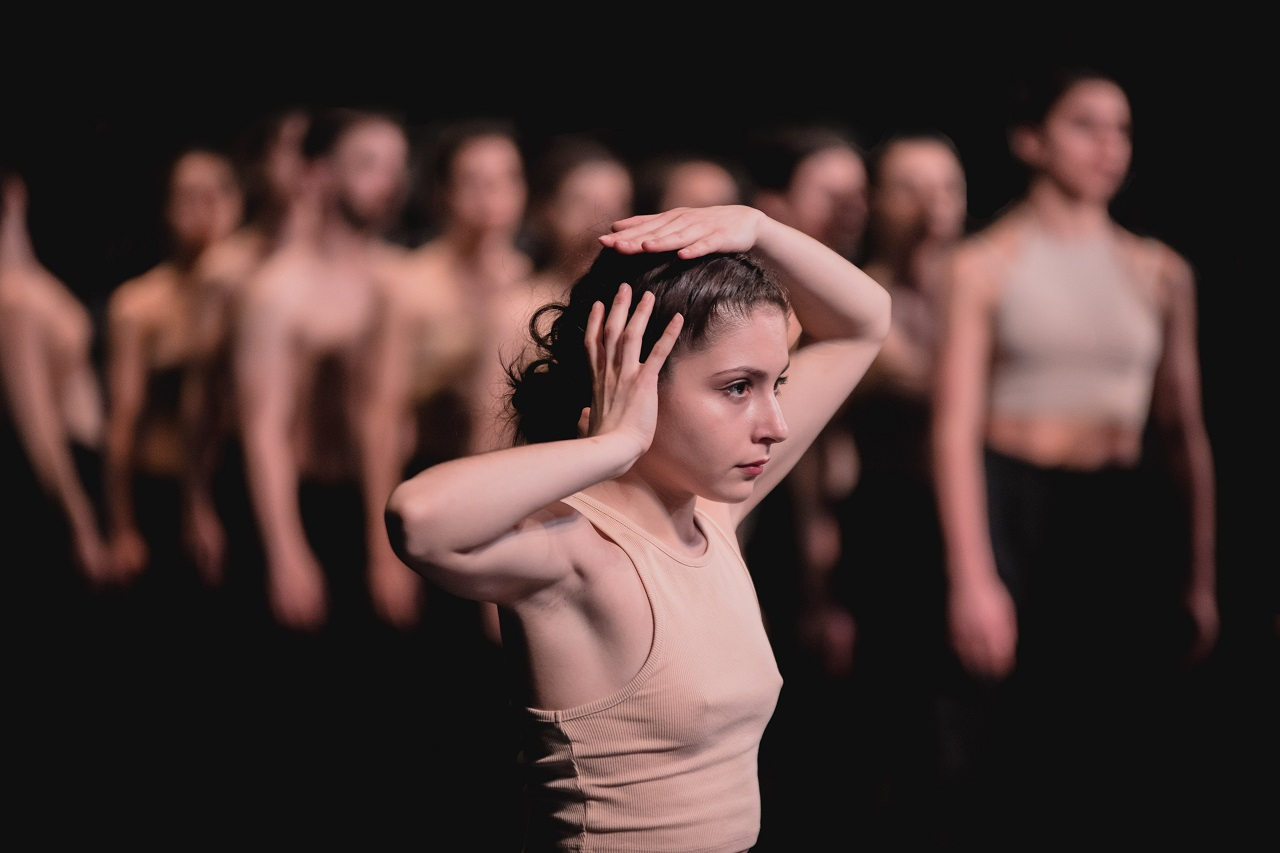Contact
ADDRESS
STAVROS NIARCHOS FOUNDATION
CULTURAL CENTER
364 Syggrou Avenue, Kallithea
TEL.
Box Office:
+30 213 0885700
Box Office email:
boxoffice@nationalopera.gr
Daily 09.00-21.00
info@nationalopera.gr
Register to our Newsletter


Conductor:
Ajtony Csaba
Choreography:
Lila Zafiropoulou
Lighting:
Alekos Yiannaros
Ensemble Corporis Miracula
Black Page Orchestra
With the participation of students of the GNO Professional Dance School and the Athens Conservatoire Professional Dance School,
Ticket prices: 12€, 15€ • Students, children: 10€
Αccording to the instructions of the Greek State, GNO’s venues at the SNFCC operate at a 100% capacity. Mask-wearing is mandatory upon entering and exiting the venue and throughout the duration of the performance.
You can find more detailed information at https://www.nationalopera.gr/en/tickets
Festival
Greek National Opera Alternative Stage
Stavros Niarchos Foundation Cultural Center
Starts at 20.30 (Sunday 19.30) | 

The production is made possible by a grant from the Stavros Niarchos Foundation (SNF) [www.SNF.org] to enhance the Greek National Opera’s artistic outreach.
The Greek National Opera Alternative Stage participates in the celebration of the centenary of the birth of the great 20th-century music innovator Iannis Xenakis with an extensive programme of concerts and performances covering the whole spectrum from his groundbreaking solo works to his stage works. The four parts of the Tribute to Iannis Xenakis will be presented on the GNO Alternative Stage at the SNFCC on 7, 8, 20, 22, 26 May 2022.
The tribute begins with the new choreographic approach of Lila Zafiropoulou, artistic director of the Athens Conservatoire Professional Dance School, to Xenakis’ modernist ballet score Kraanerg (7,8/5) in collaboration with the Corporis Miracula ensemble, the Black Page Orchestra, and students of the GNO Professional Dance School and the Athens Conservatoire Professional Dance School.
Written, in part, as a reaction by Iannis Xenakis to the transformative yet destructive power of the student movements of the late 60s, the modernist ballet score Kraanerg (1968-69) is one of the composer’s rare attempts to combine live music with the electroacoustic magnetic tape in a riveting composition for woodwinds, brass and strings along with quadraphonic tape. The work was initially intended as the score of a ballet choreographed by Roland Petit with “op-art” sets by Victor Vasarely, commissioned for the opening of the National Arts Centre (NAC) in Ottawa, Canada in 1969.
Its title, Kraanerg, is a composite of two Greek roots (“kraan”, probably deriving from the verb “kraino” that means to perfect, to accomplish sth” and “erg”), which jointly convey the concept of an “accomplished act”. It also refers to the youth movements of that period – 1969 was an important year for modern social history – but also to the composer’s utopian vision of an upcoming “biological struggle between generations unfurling all over the planet, destroying existing political, social, urban, scientific, artistic and ideological frameworks on a scale never before attempted by humanity.”, according to Xenakis’ notes.
The new choreographic approach to the score that will be presented on the GNO Alternative Stage bears the stamp of Lila Zafiropoulou, artistic director of the Athens Conservatoire Professional Dance School, and the Athens Conservatoire’s resident dance ensemble that also serves educational purposes, Corporis Miracula. As the choreographer notes: “Xenakis’ sonic universe, produced by his conception of an original and unique space in which science, art and philosophy may coexist, suggests the creation of stage events alongside and concurrently with the “sonic” events: the “densifications”, “rarefactions” and “sonic masses” of the Kraanerg incidental music. This new “language” is mathematically analysed and composed, but it also creates its own aesthetic conditions. The choreography endeavours to listen, but also add to this new language, thus creating a more complete “event”, 53 years after Kraanerg’s creation. The temporal distance invests this new artistic conjuncture with the freshness of an interpretation. Techniques and styles are relegated to the background – not by cancelling themselves, but through their contribution to something more important: the realisation of a narrative as real as it is ineffable, and as clear as it is equivocal.”
STAVROS NIARCHOS FOUNDATION
CULTURAL CENTER
364 Syggrou Avenue, Kallithea
Box Office:
+30 213 0885700
Box Office email:
boxoffice@nationalopera.gr
Daily 09.00-21.00
info@nationalopera.gr